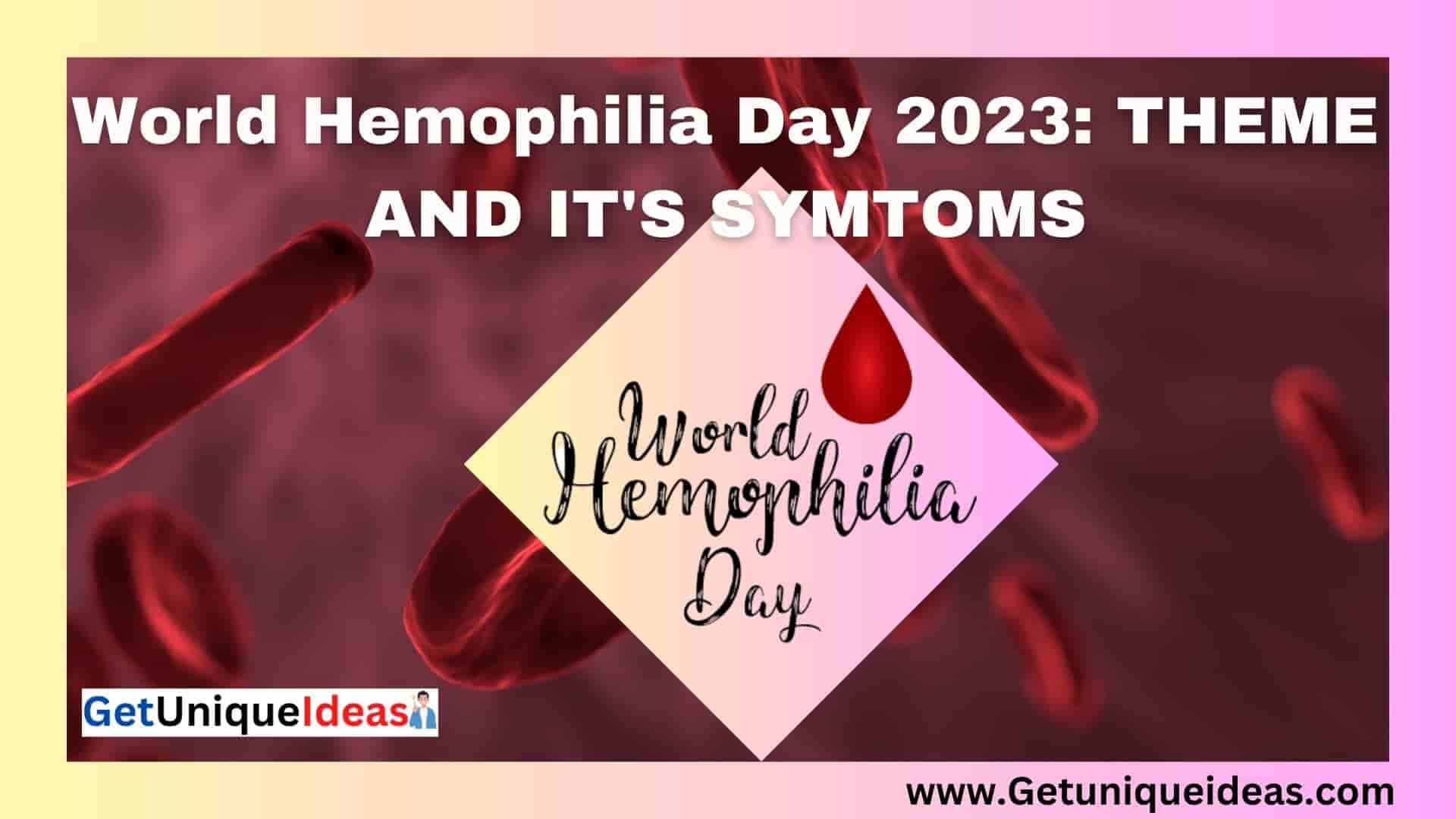World Hemophilia Day, held each year on April 17th is a day to raise awareness of Hemophilia which is an uncommon genetic disorder that affects millions of people across the world.
Furthermore, the day provides an opportunity to remember the victims of the complications caused by the disease.
This article will explore the history of the day, its significance, and its theme.
History of World Hemophilia Day

World Hemophilia Day was started in 1989 by the International Federation of Hemophilia (WFH). As a global organization working to improve the lives of those who are affected by bleeding disorders, WFH is determined to make a difference in lives around the world.
The 17th of April was selected for World Hemophilia Day as it commemorates Frank Schnabel, its founder who passed away from hemophiliac-related complications in the year 1991.
Significance of World Hemophilia Day
The goal of World Haemophilia Day is to raise awareness of Hemophilia and other bleeding disorders.
Hemophilia is an uncommon genetic condition that hinders blood’s ability to form clots.
Patients with Hemophilia are deficient in certain proteins that are called clotting factors.
These proteins enable blood to clot normally, resulting in life-threatening bleeding in the event of minor injuries such as life-threatening brain bleeds.
World Hemophilia Day provides an opportunity to promote the rights of people living with Hemophilia.
Because of a lack of knowledge about health conditions, a lot of suffer stigma and discrimination.
By raising awareness of this day we can lessen stigma and improve access to healthcare services for the people affected.
World Hemophilia Day 2023 Theme
The theme for World Hemophilia Day in 2023 is ensuring that everyone with hemophilia and other inherited bleeding disorders has access to the necessary care and treatment.
“Access for All: Partnership, Policy, Progress – Engaging Governments to Integrate Inherited Bleeding Disorders into National Policy” is the title of the project.
That’s a mouthful, but it basically means that we need to collaborate and involve governments in order to ensure that people with hemophilia and other bleeding disorders are included in national policies.
This will help with the diagnosis, treatment, and management of these conditions, which is crucial for those who are affected.
So let us all join forces to ensure that everyone has access to the care and support they require!
What Is Hemophilia?
Hemophilia is an uncommon genetic disorder that hinders blood’s ability to properly clot and causes more bleeding episodes as a result of decreased levels of clotting factor in the system, and potentially longer times of bleeding than is normal.
People with Hemophilia tend to bleed more frequently and for longer periods than normal due to this weakness, which causes internal hemorrhaging that is more frequent than usual, and for longer time periods.
The severity of Hemophilia is determined by the concentration of blood factors for clotting and there are two major types: Hemophilia A and B Both are a result of the absence of Clotting factors VIII or IX.
Hemophilia is often inherited through an X-linked recessive pattern which makes the condition more common for males as opposed to females.
While there isn’t a cure for Hemophilia. however, with the proper treatment and support, those with the disease can live lifelong and healthy ones.
Impact
World Hemophilia Day has created a significant and powerful statement about the presence of Hemophilia and the treatment requirements for those with the disease, thanks to efforts by organizations like WFH.
The public is becoming more aware of the existence of Hemophilia and the difficulties faced by people with Hemophilia government and healthcare systems are increasingly aware of the need for better access to treatment for people suffering from Hemophilia.
World Hemophilia Day has also helped in the treatment of this disorder.
With growing awareness and increased funding research is developing more effective treatments with fewer adverse effects.
No longer is hemophilia a death sentence. With proper treatment and support, people suffering from hemophilia can live lifelong and satisfying lives.
What causes hemophilia?
Hemophilia is an inheritable genetic disorder passed down by parents to their children. It is caused by genetic mutations responsible for generating blood factors that clot.
The degree of Hemophilia is determined by the quantity of clotting factor in the blood. It is typically more common in males than females. However, Hemophilia may occur in a spontaneous manner also.
Symptoms of hemophilia
The degree of Hemophilia can determine its manifestations. Patients with mild Hemophilia will typically experience only prolonged bleeding after surgery or injury and those who suffer from more severe cases
may suffer from spontaneous bleeding in joints and muscles, causing stiffness, swelling, pain, and other manifestations physical of the condition. Other signs could include:
- Bloody stool or urine
- Nosebleed
- Bleeding from the gums and mouths
- Headaches
- Vision problems
- Blooding after vaccinations and other injections
In extreme instances, Hemophilia can lead to dangerous bleeding in the brain as well as other organs.
Treatment
Unfortunately, Hemophilia cannot yet be treated, but with the right treatment and care, there is a possibility for patients suffering from it to lead regular and healthy lives.
It is a matter of the replacement of missing factors for clotting by frequent infusions with concentrated solutions that contain these proteins.
Patients suffering from Hemophilia might require medication to manage bleeding or discomfort.
The use of physical therapy as well as other treatments can also prevent joint damage while preserving mobility.
Regular visits to a Hemophilia specialist are crucial to controlling their conditions and avoiding complications.
Conclusion: World Hemophilia Day
World Hemophilia Day is an important event that increases consciousness of Hemophilia along with other bleeding conditions.
It is also aiding in reminding those with Hemophilia about the issues they face and highlights the need for greater accessibility to healthcare.
Through advocacy on their behalf and defending their rights, we can decrease stigma while making sure that everyone with Hemophilia has access to the care they require to lead a happy life.
Other Links:-









